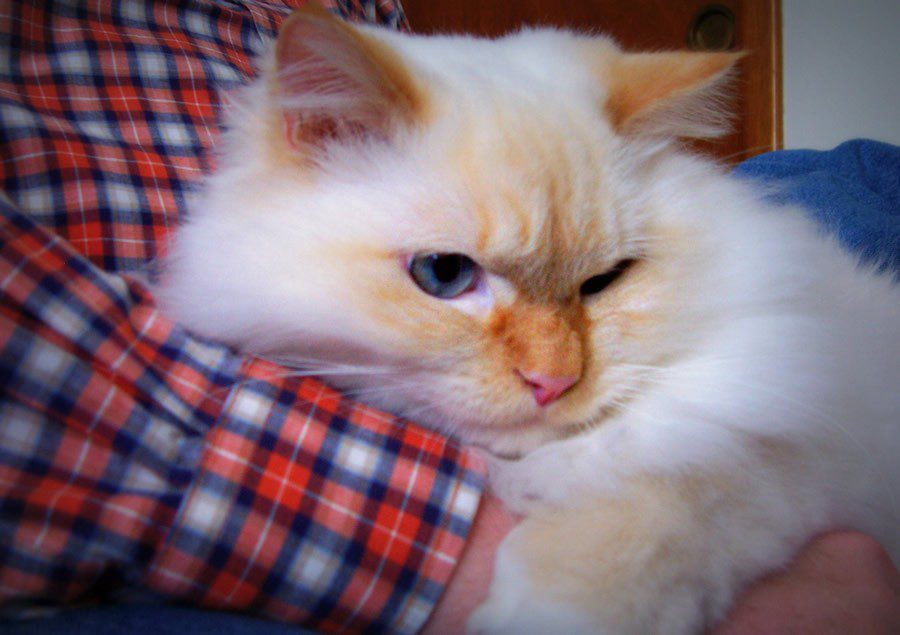How do Cats Purr and Why; a Des Moines Vet Reviews the Facts
June 24, 2014
How do cats purr and why?
by: Dr. Nancy Peterson, Ingersoll Animal Hospital You really need to get up and get something out of another room but you have a purring machine sitting on your lap. It seems almost wrong to disturb something with such a content look and sound. How is she making this much noise, and why? There have been lots of theories about how cats purr and what it means when they do. We do know that cats learn to purr when they are only a few days old. Domestic cats and a few of their relatives purr but not all types of cats can. Cats that purr (such as mountain lions and bobcats) can’t roar. Cats that roar (such as lions and tigers) can’t purr. The roaring cats don’t have strong enough structures around their voice box (larynx) to produce a purr. How do cats purr? It has been a perplexing question for a long time with many different theories. We now know that purring starts in the brain. A rhythmic, repetitive neural oscillator in the brain sends messages to the diaphragm and the internal voice box (laryngeal) muscles, causing them to twitch and cause a burst of noise at the rate of 25 to 150 vibrations per second (Hz). The laryngeal muscles are responsible for the opening and closing of the glottis (space between the vocal chords) which causes a sudden separation of the vocal cords, producing the purr sound. What makes the purr different from other cat vocalizations is that it is produced during the entire breathing cycle (inhaling and exhaling). Other cat sounds such as the “meow” only occur during expiration of the breath. Cats purr during both inhalation and exhalation with a consistent pattern and frequency between 25 and 150 Hertz. Various investigators have shown that sound frequencies in this range can improve bone density and promote healing. These frequencies may be a “natural healing mechanism” in cats and may be linked to the strengthening and repair of bone and tendons and aid in the relief of pain and wound healing. The purr may help counteract a cat’s tendency for long periods of rest that would contribute to loss of bone density. We frequently think that cats purr when they are content but they also purr at times of distress when frightened or threatened. Dr. Kelly Morgan at the University of Illinois at Urbana-Champaign College of Veterinary Medicine in Chicago suggest we think of purring like smiling. “People will smile when they’re nervous, when they want something, and when they’re happy, so perhaps the purr can also be an appeasing gesture,” Morgan says, adding that this is purely speculation. So although it is tempting to state that cats purr because they are happy, it is more plausible reason that cat purring is a means of communication and a potential source of self-healing. Those lovely purr’s may not only benefit our cats but cats are great about sharing those healing vibrations with our bones too!




